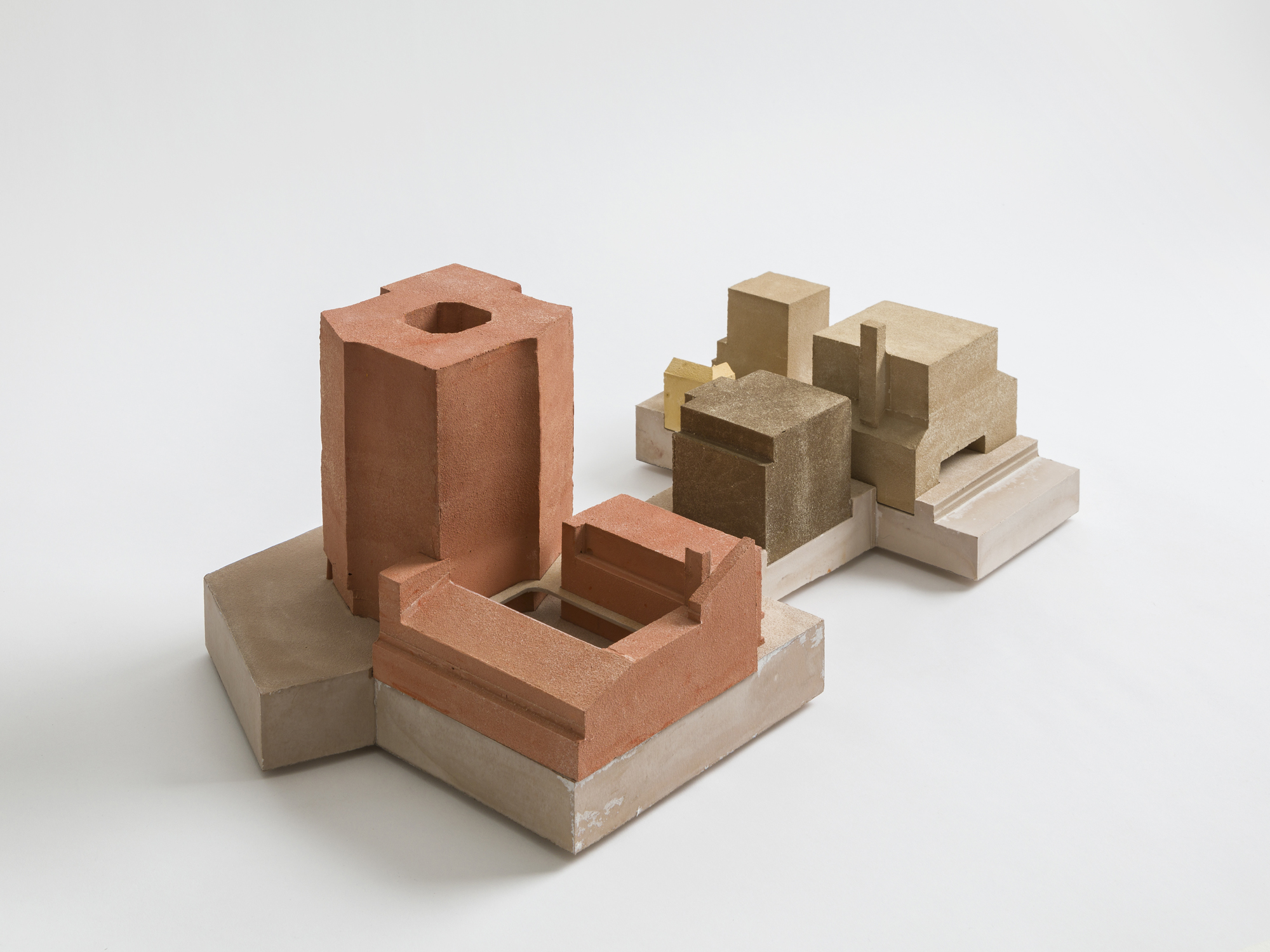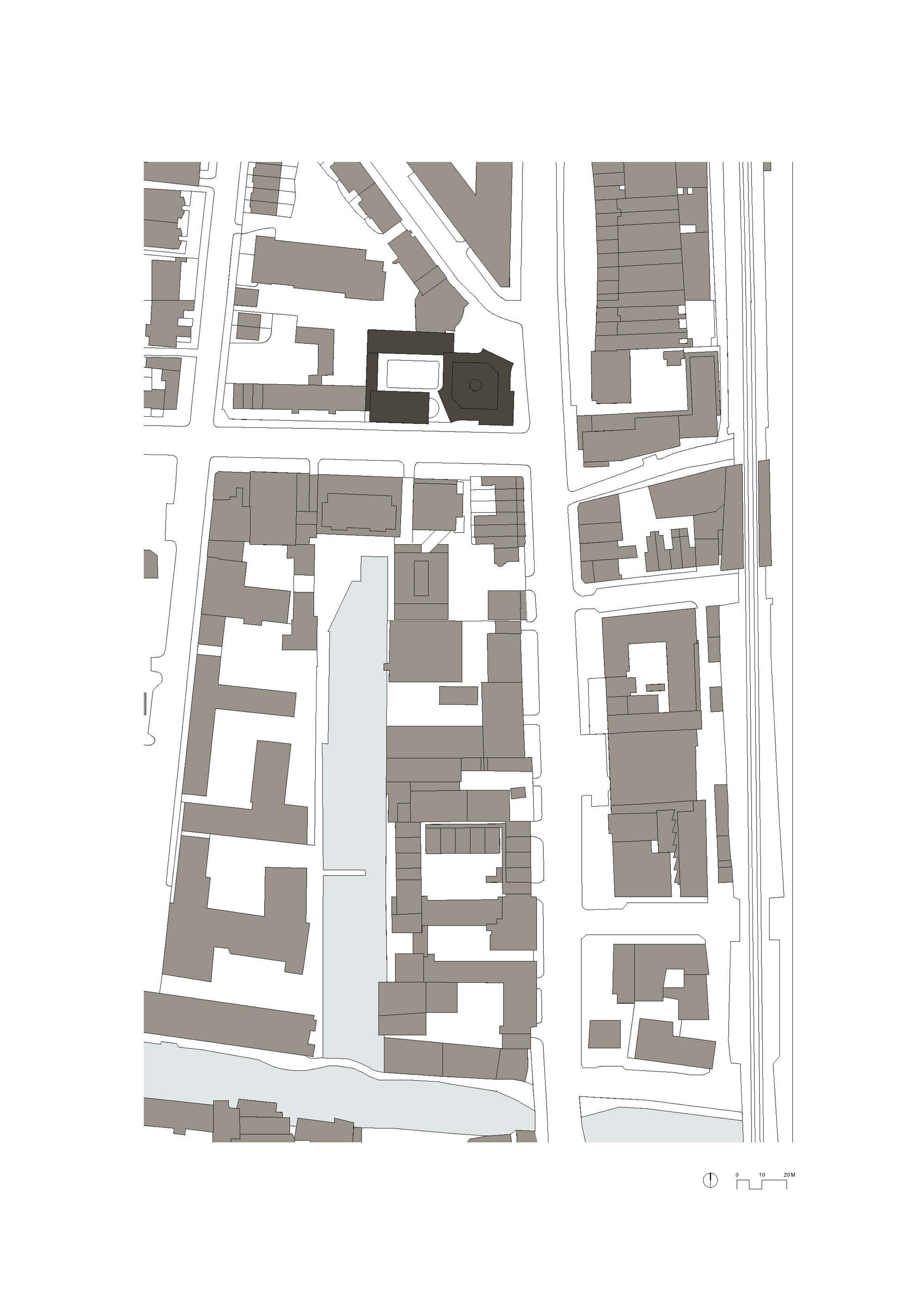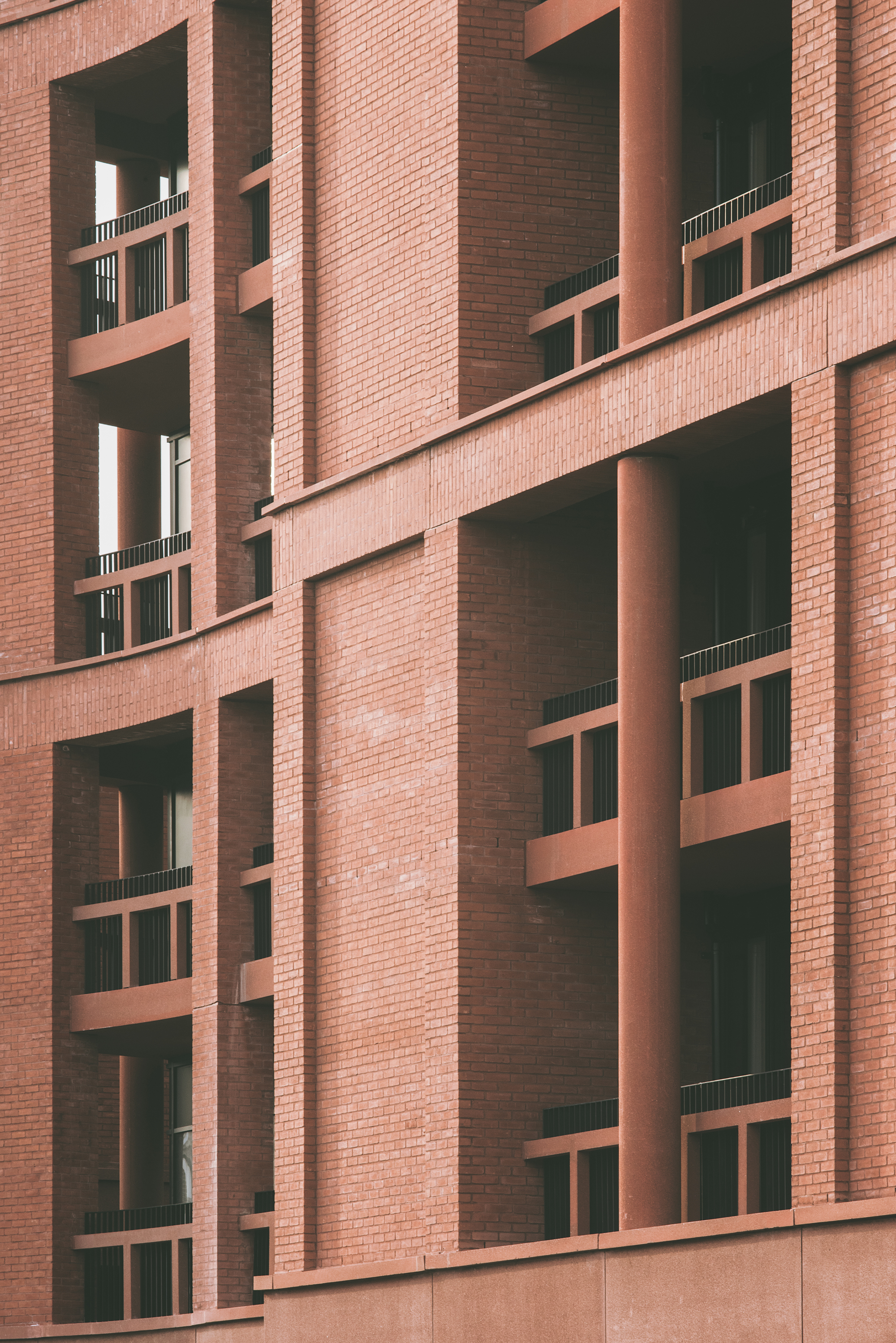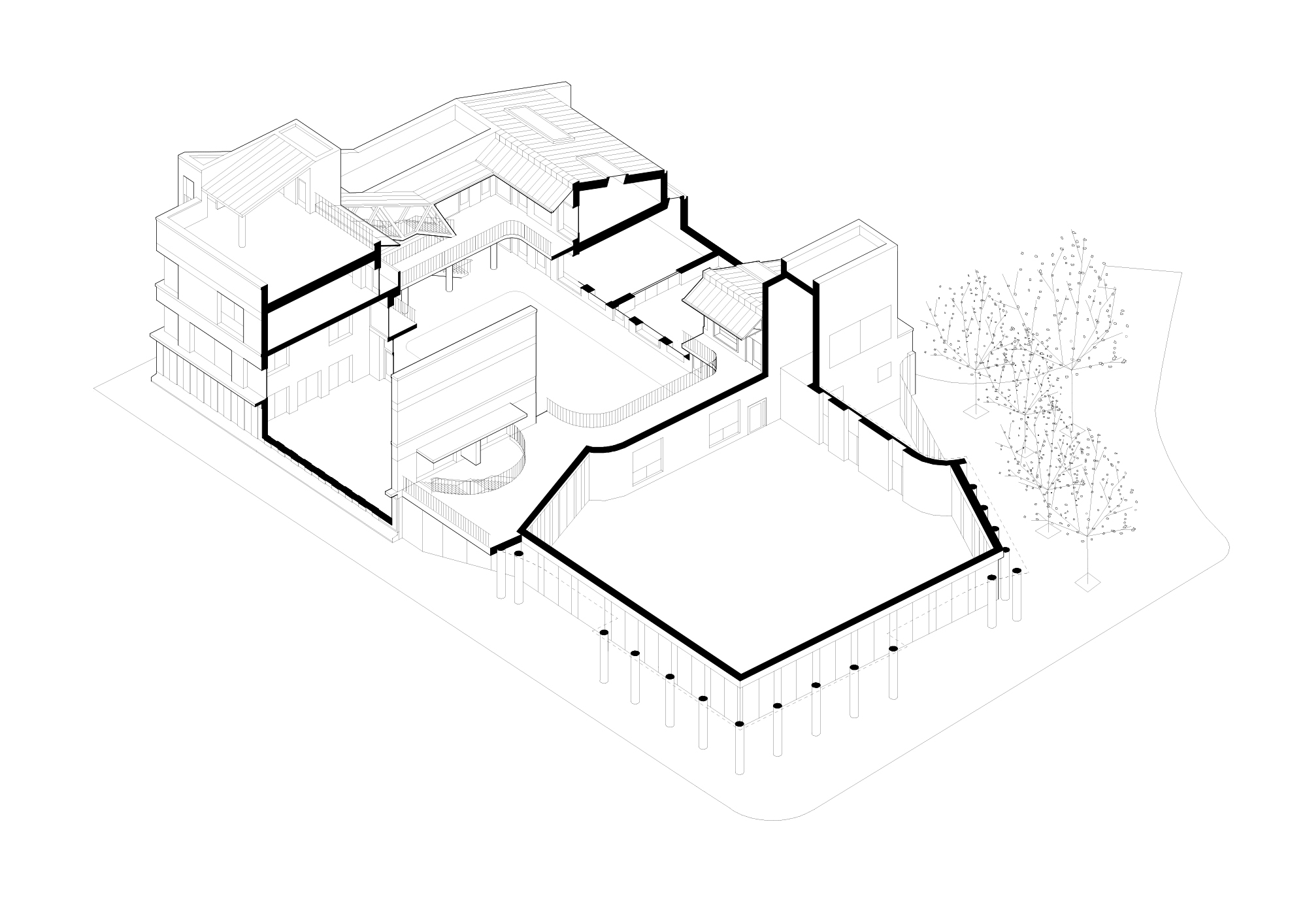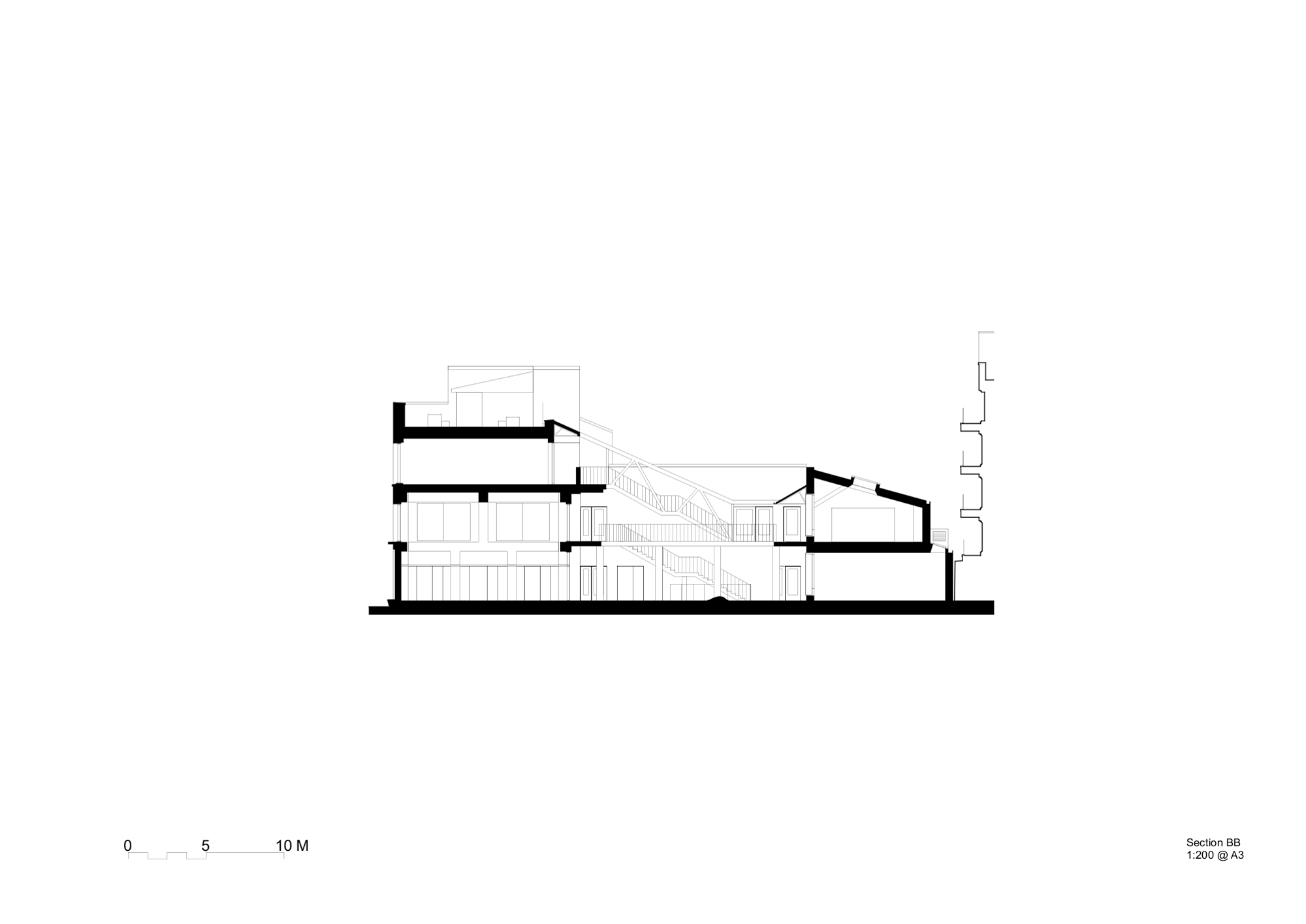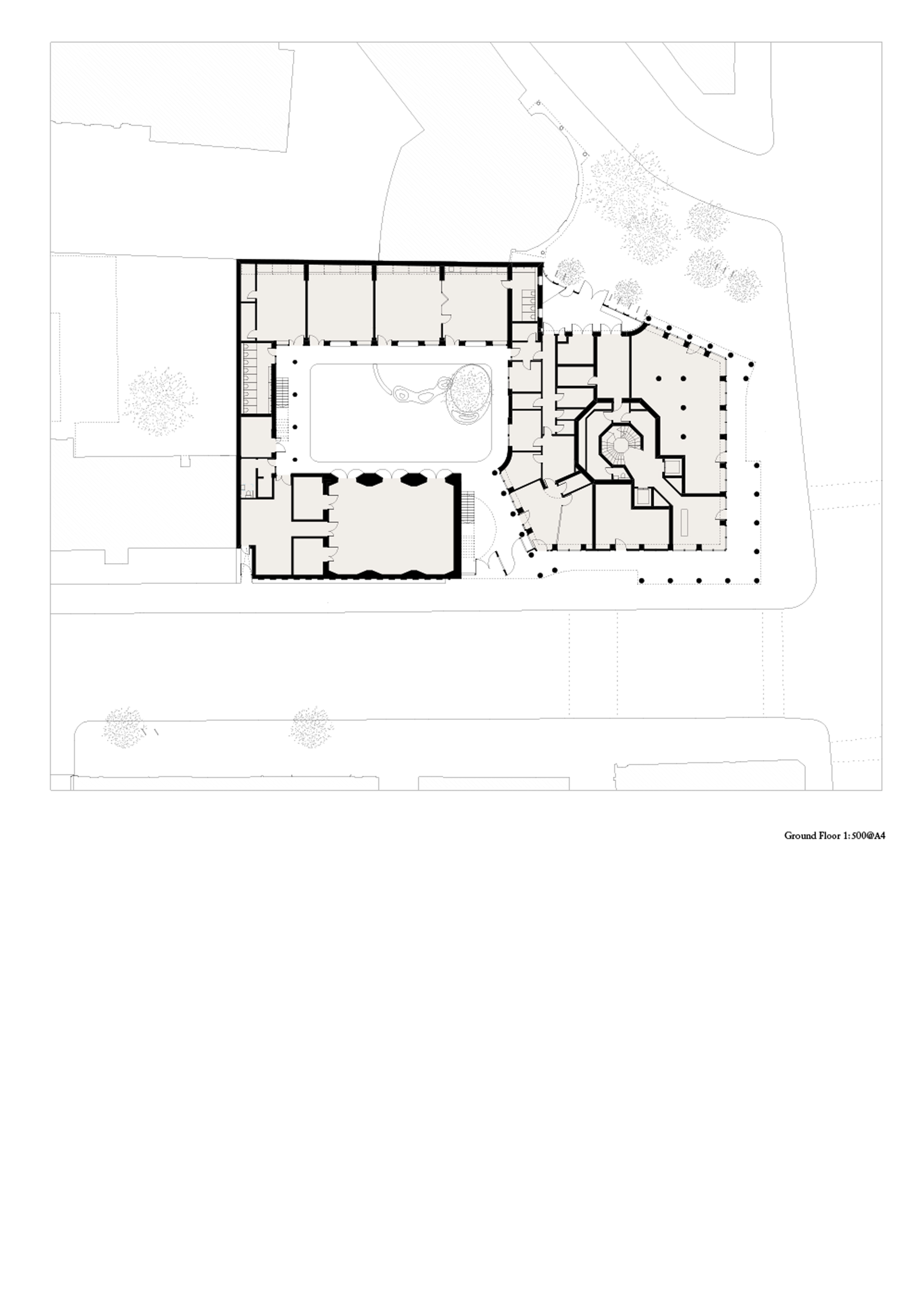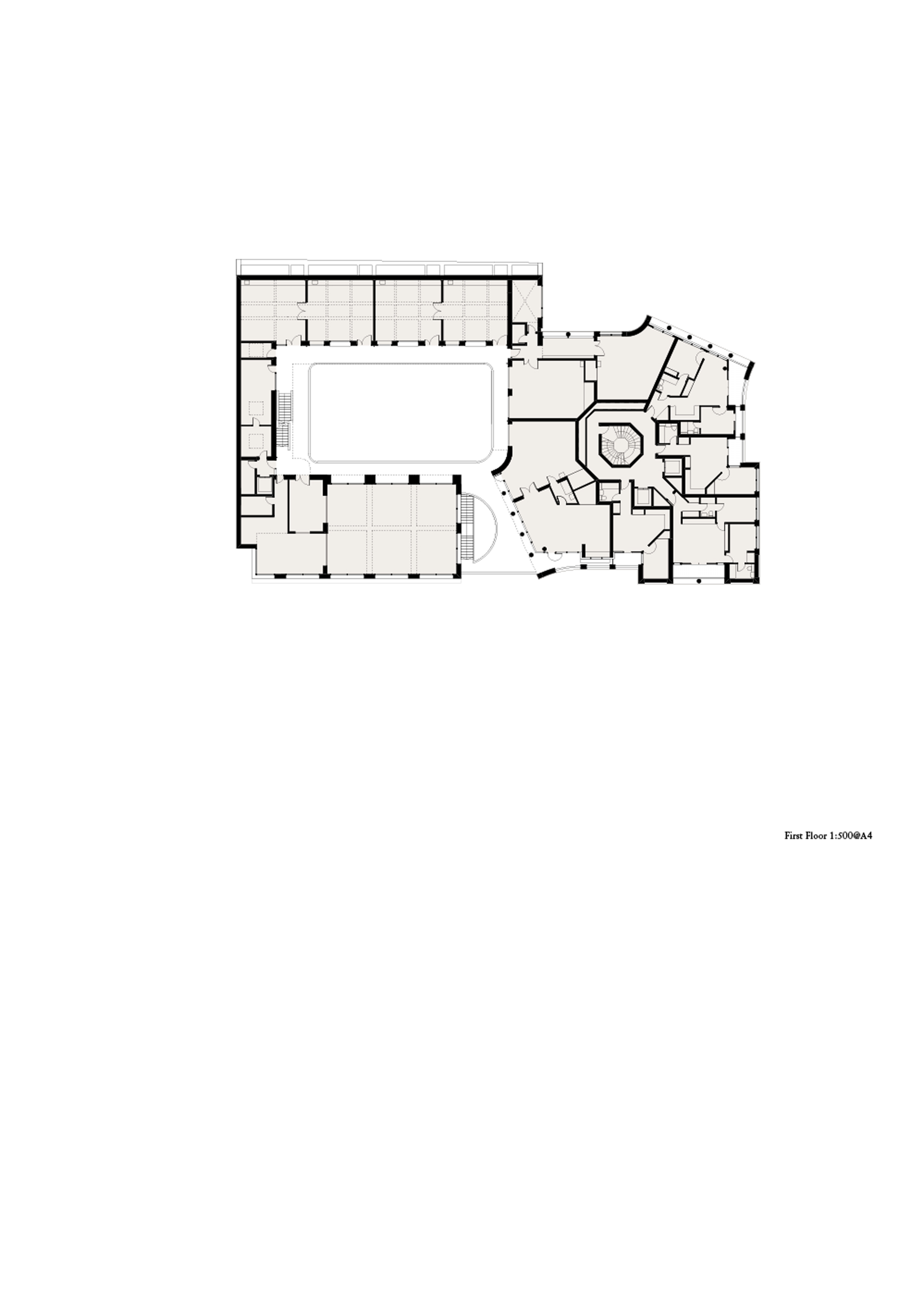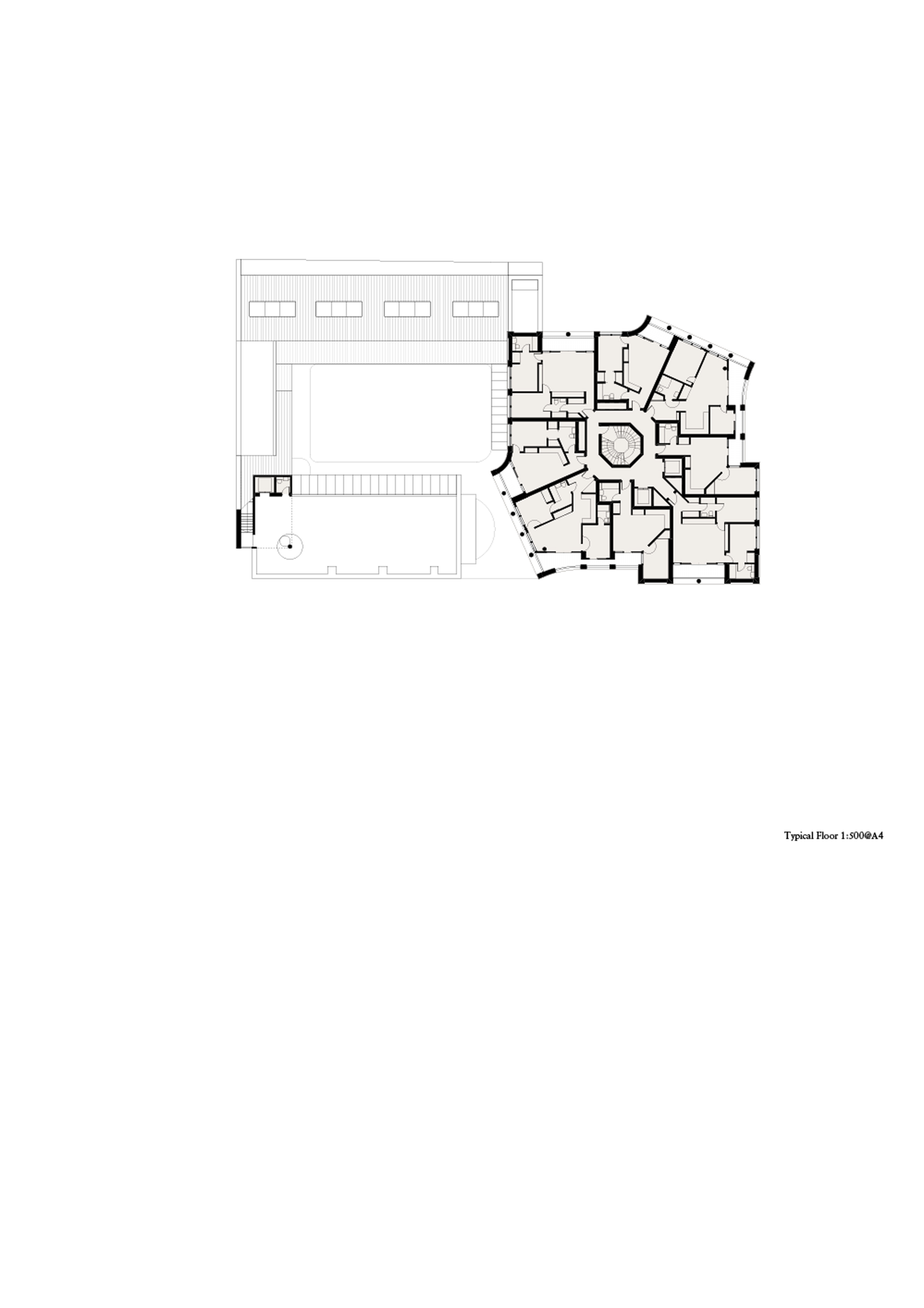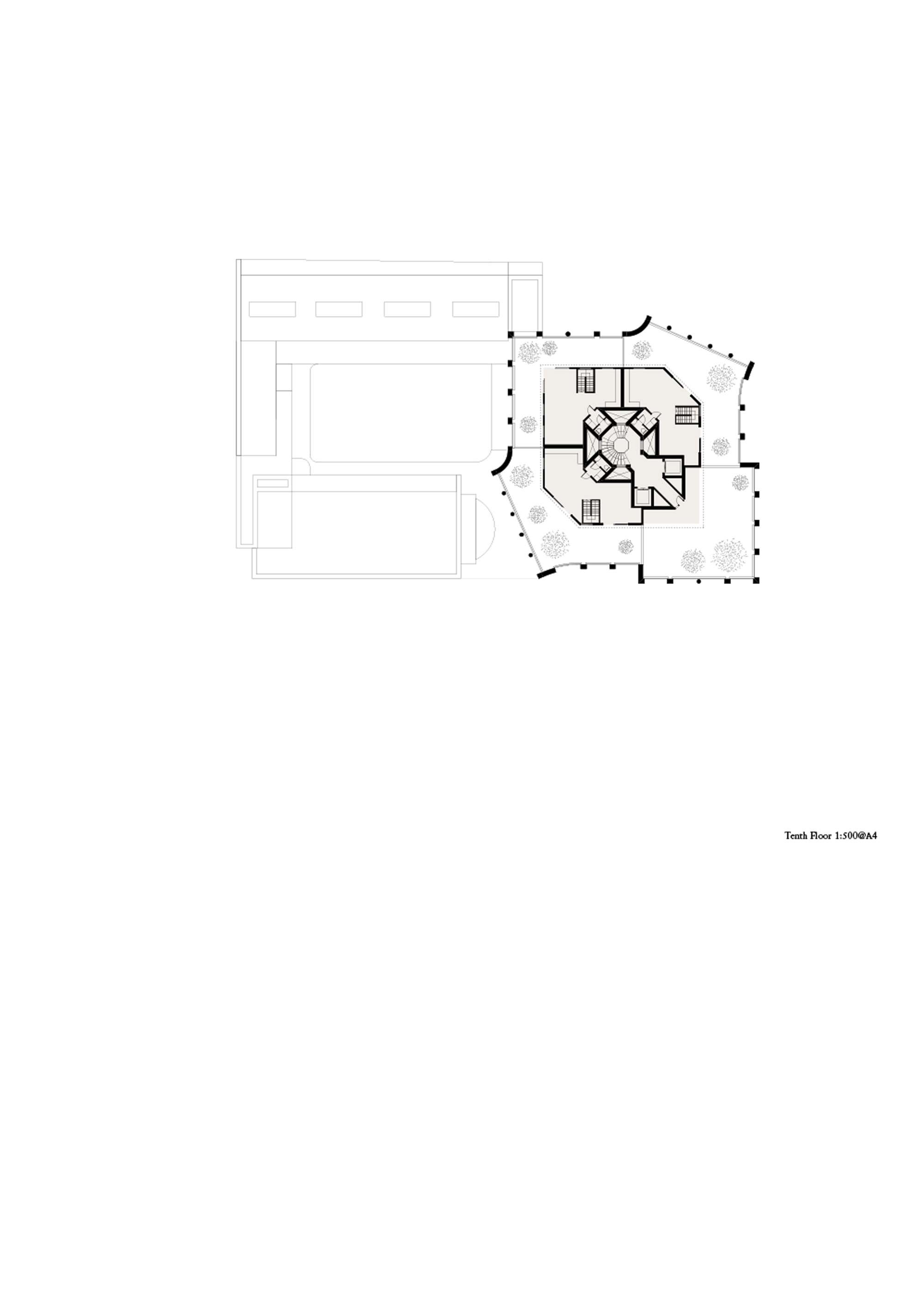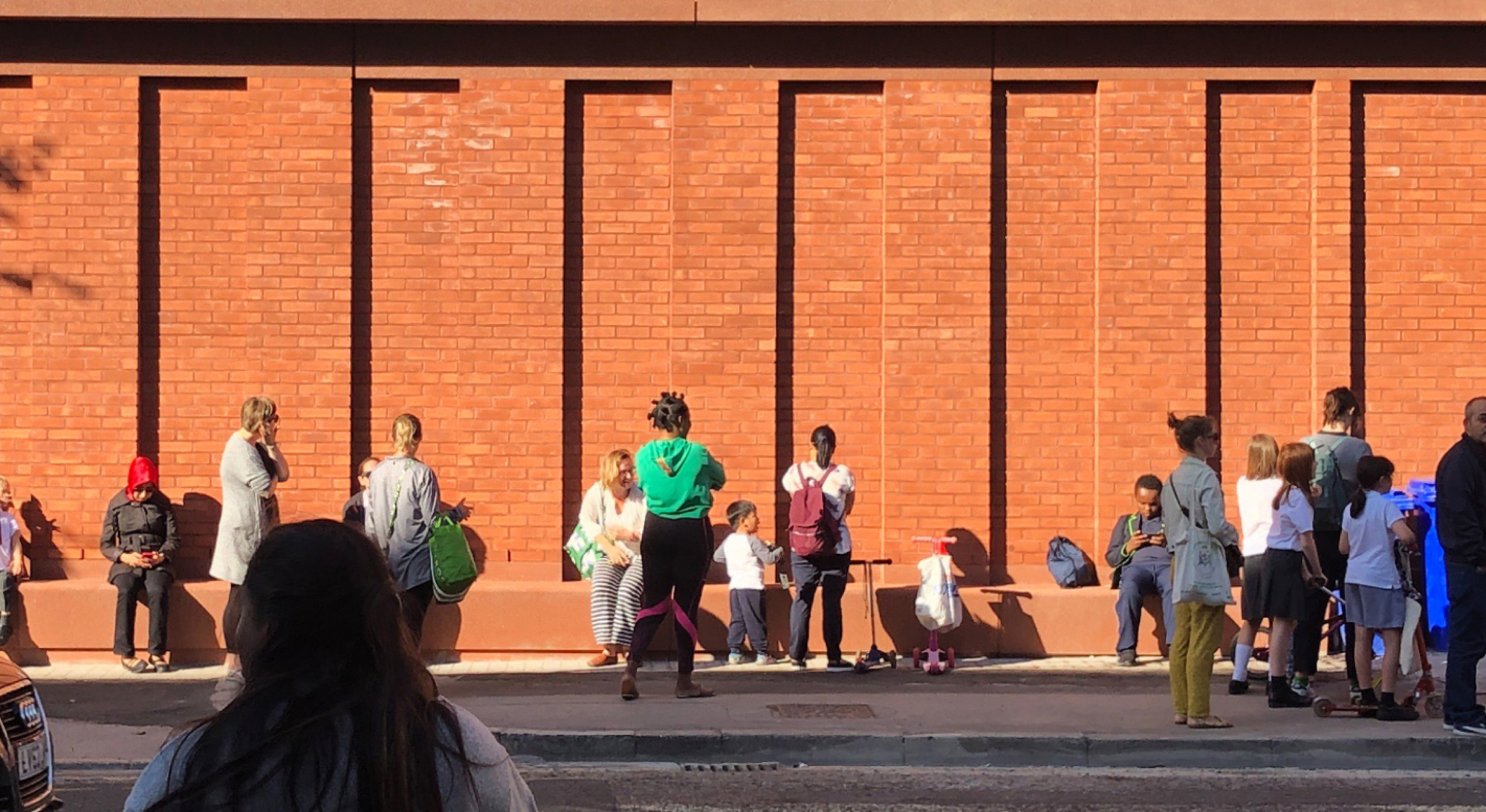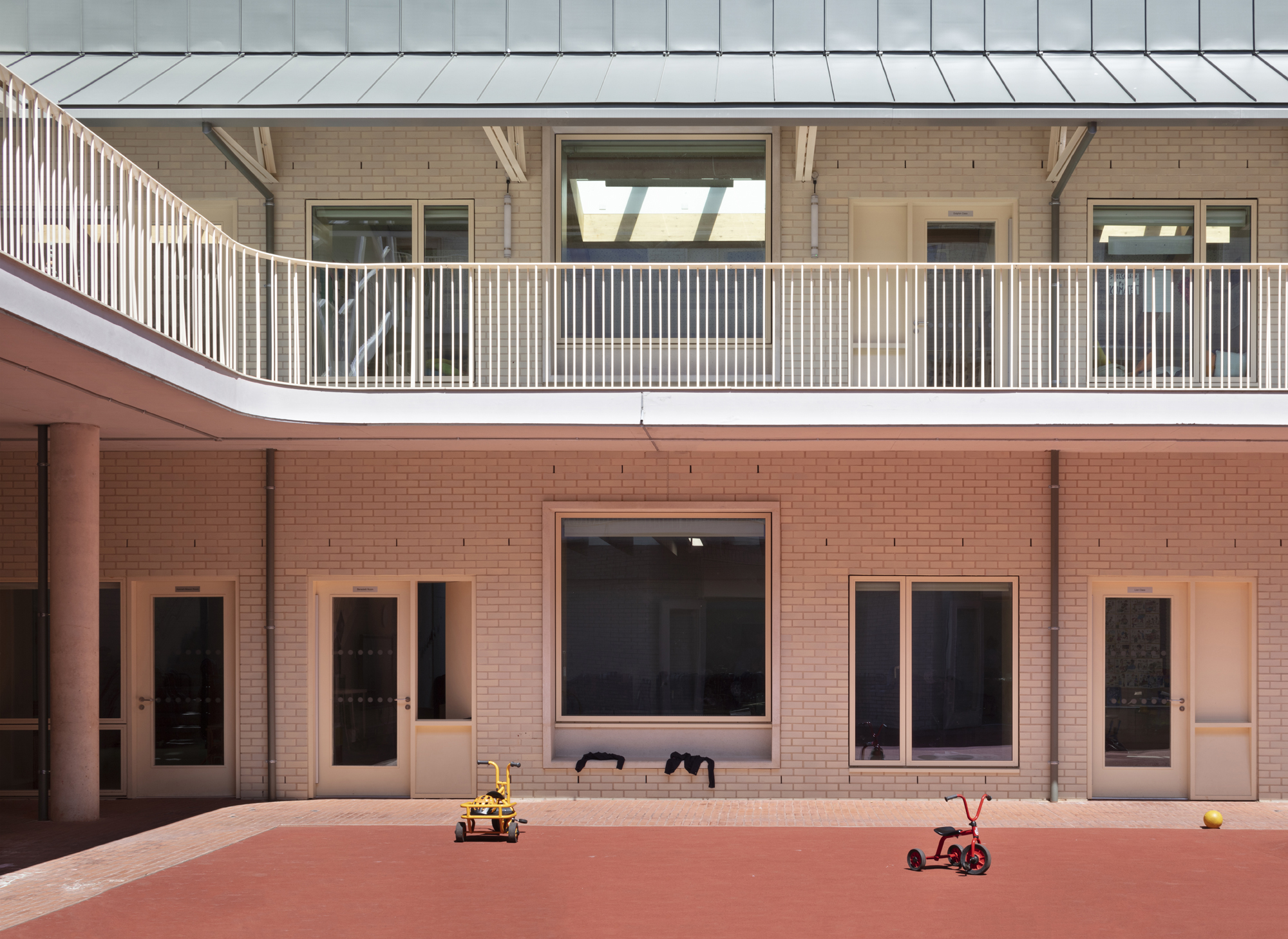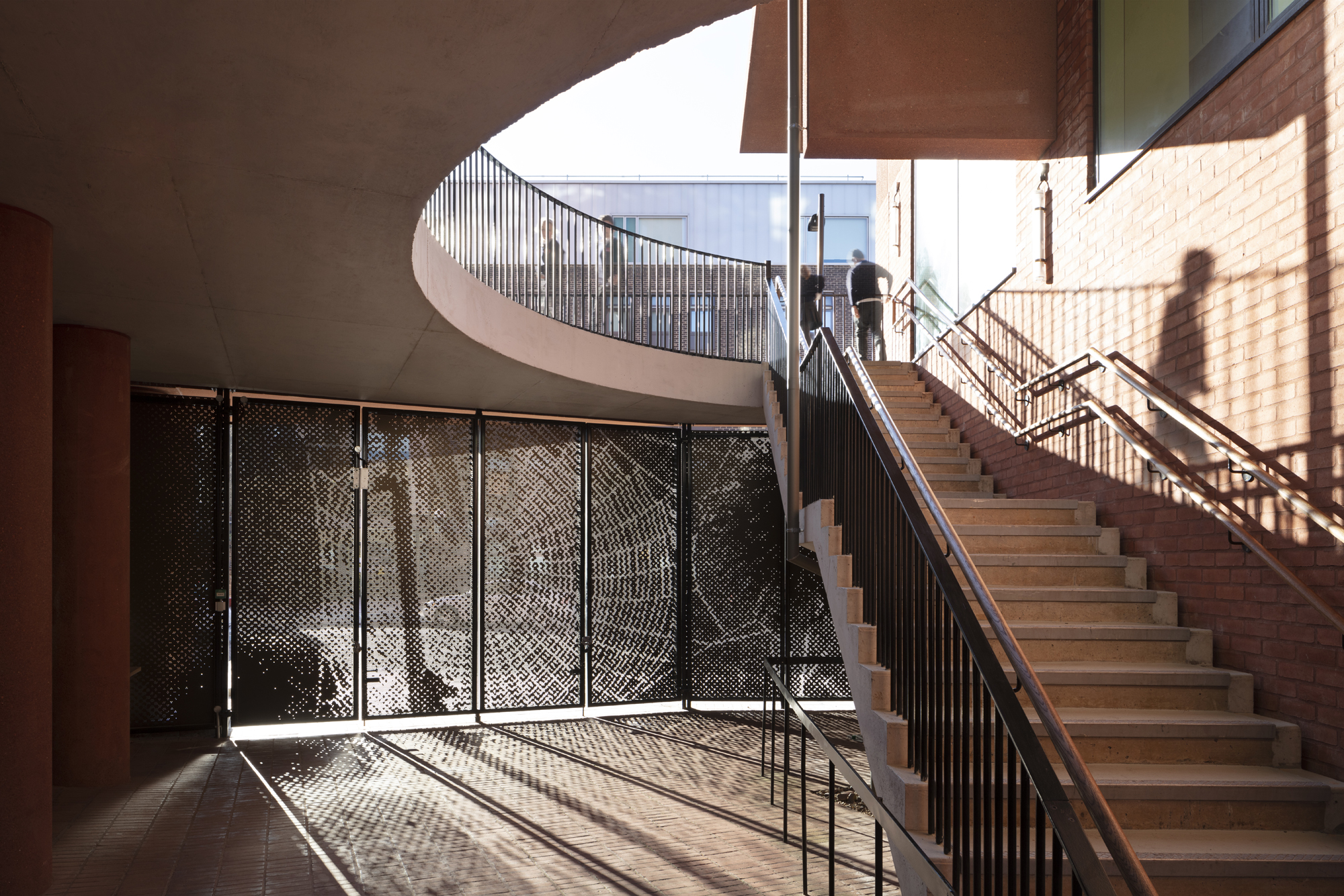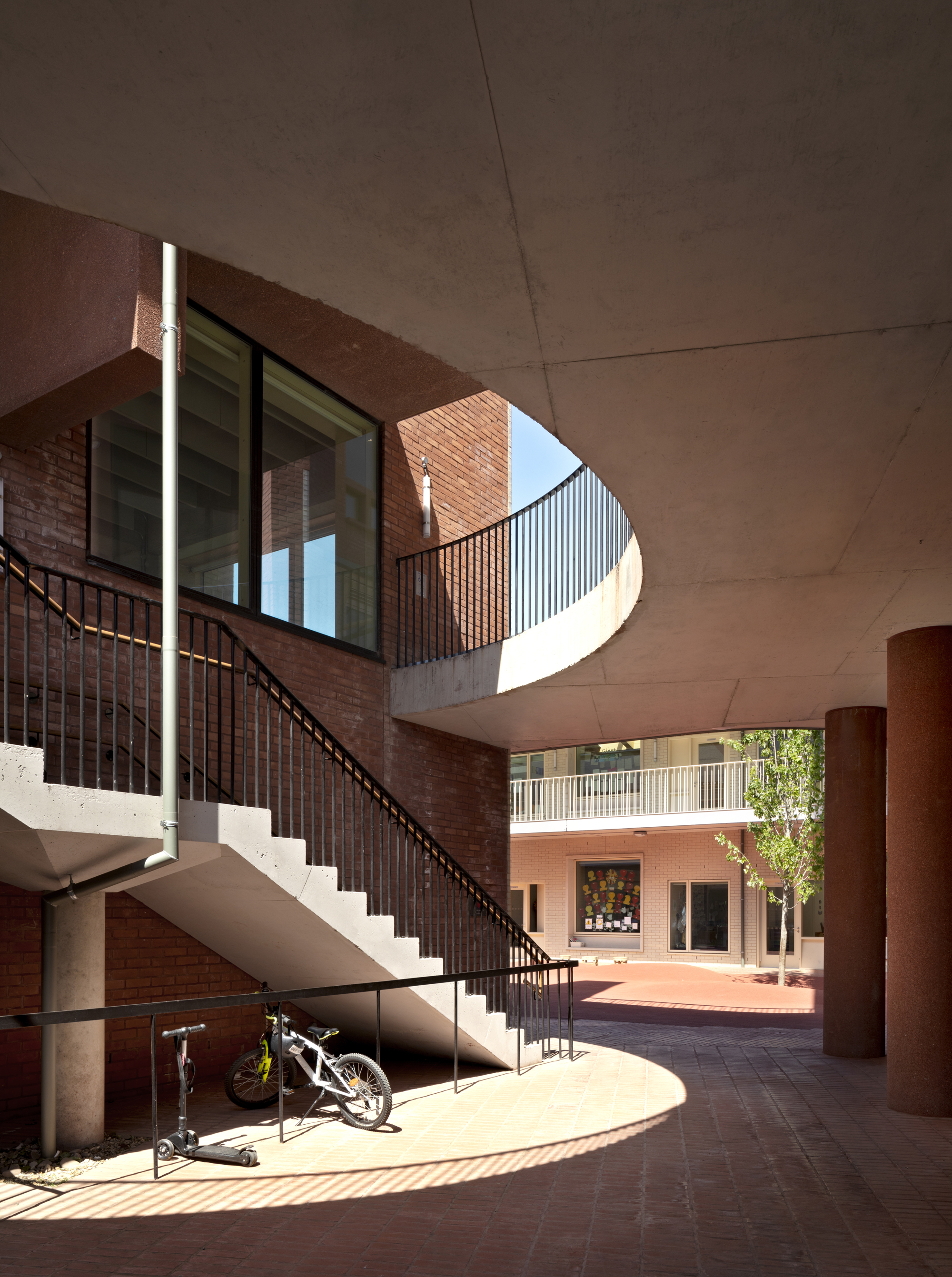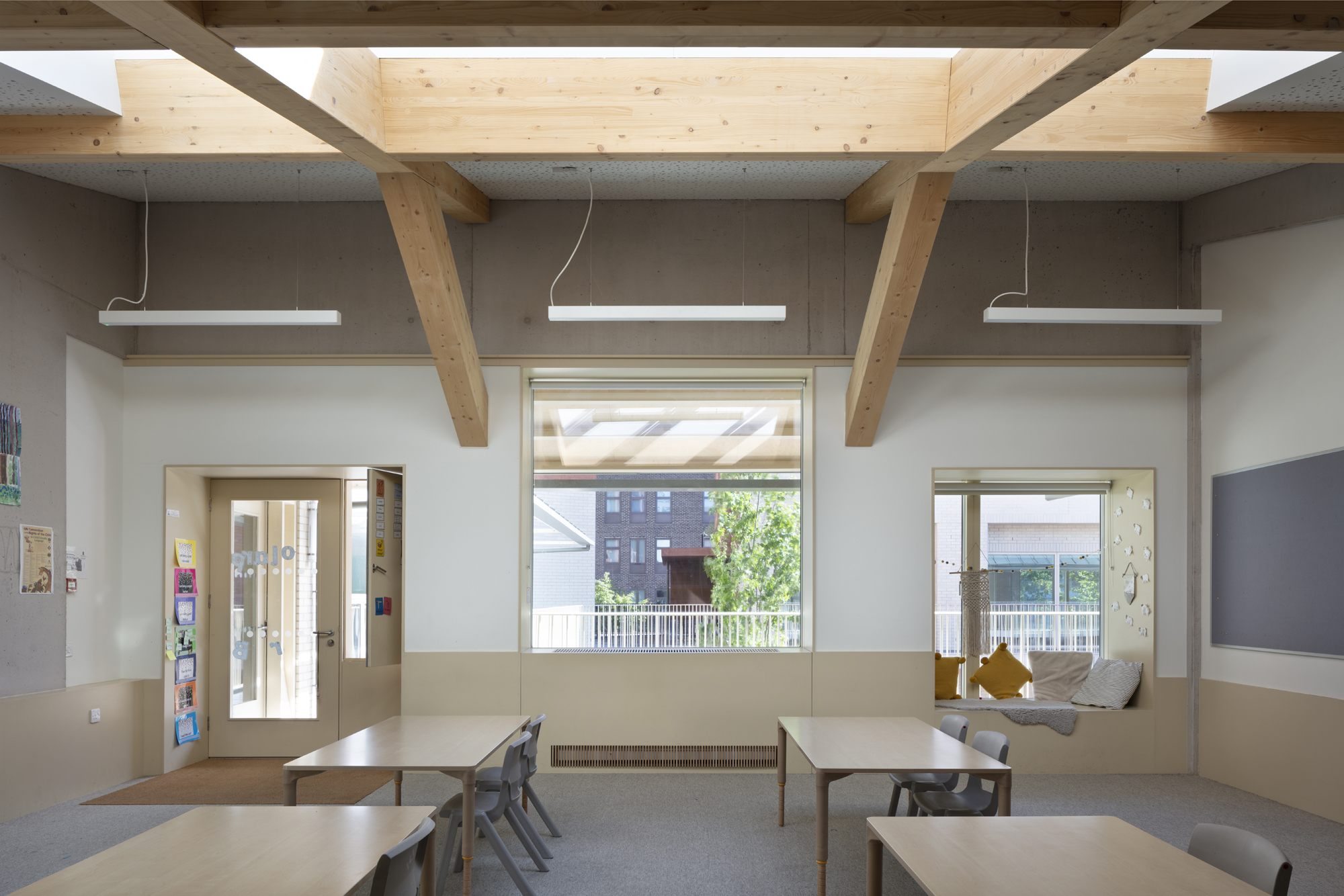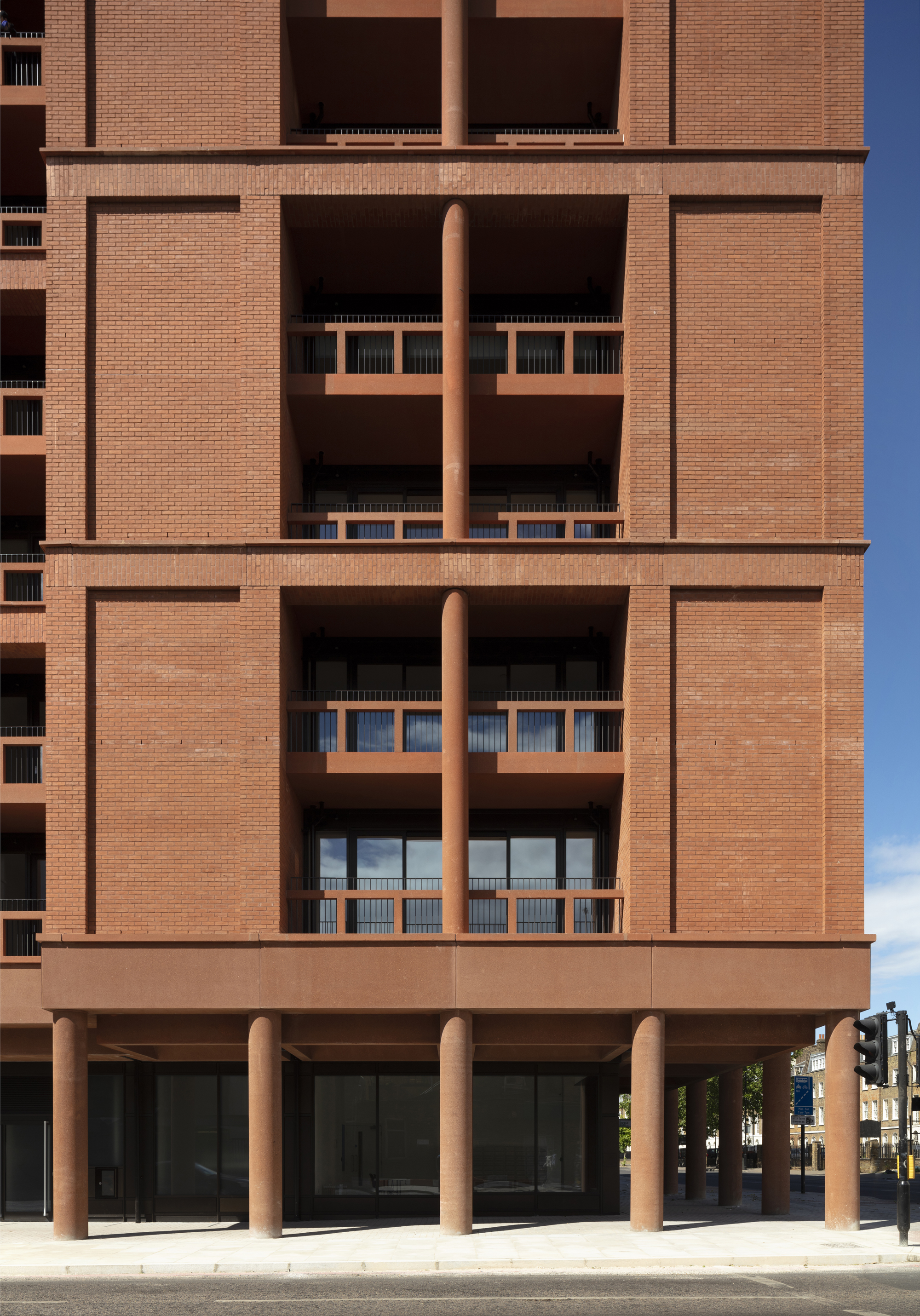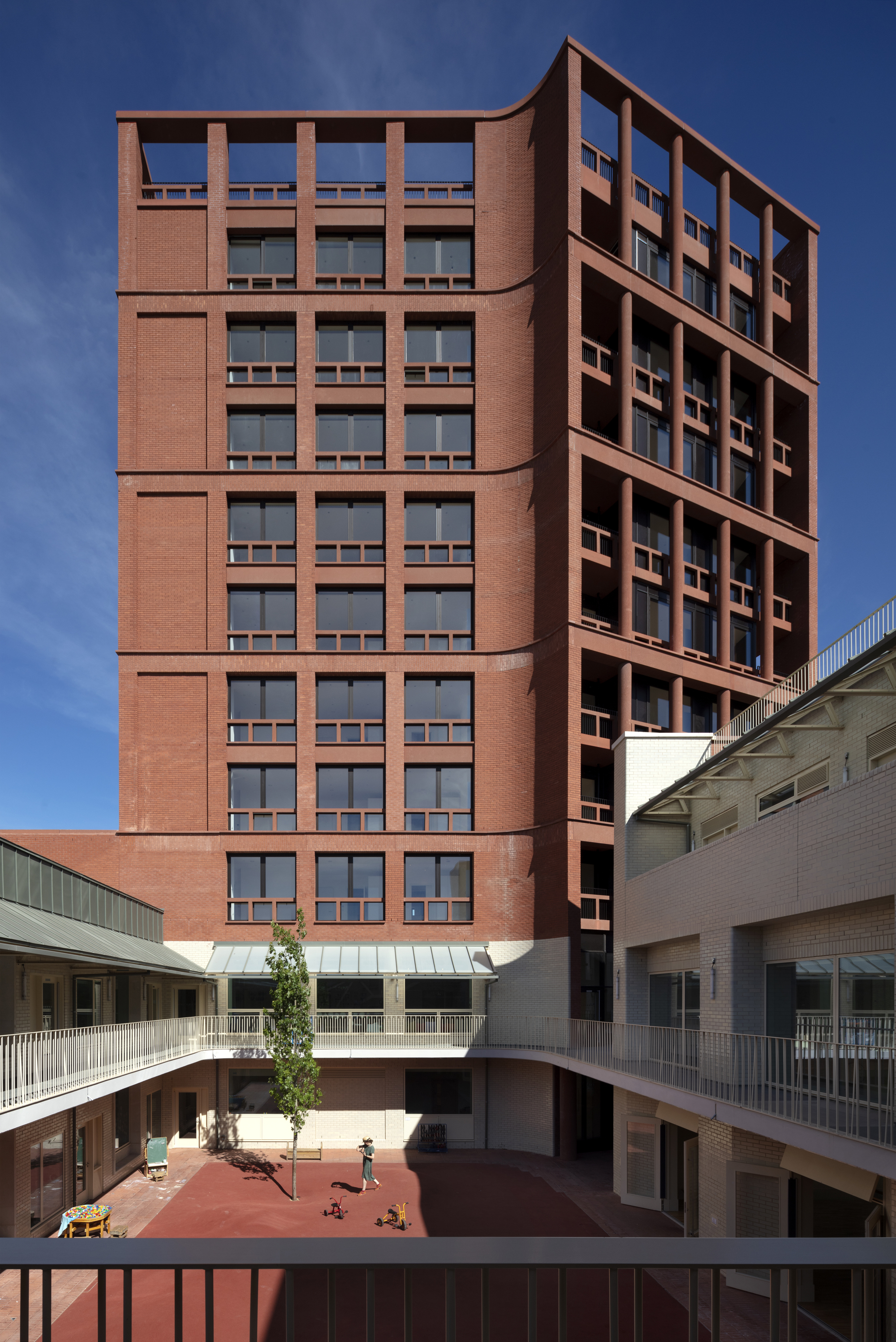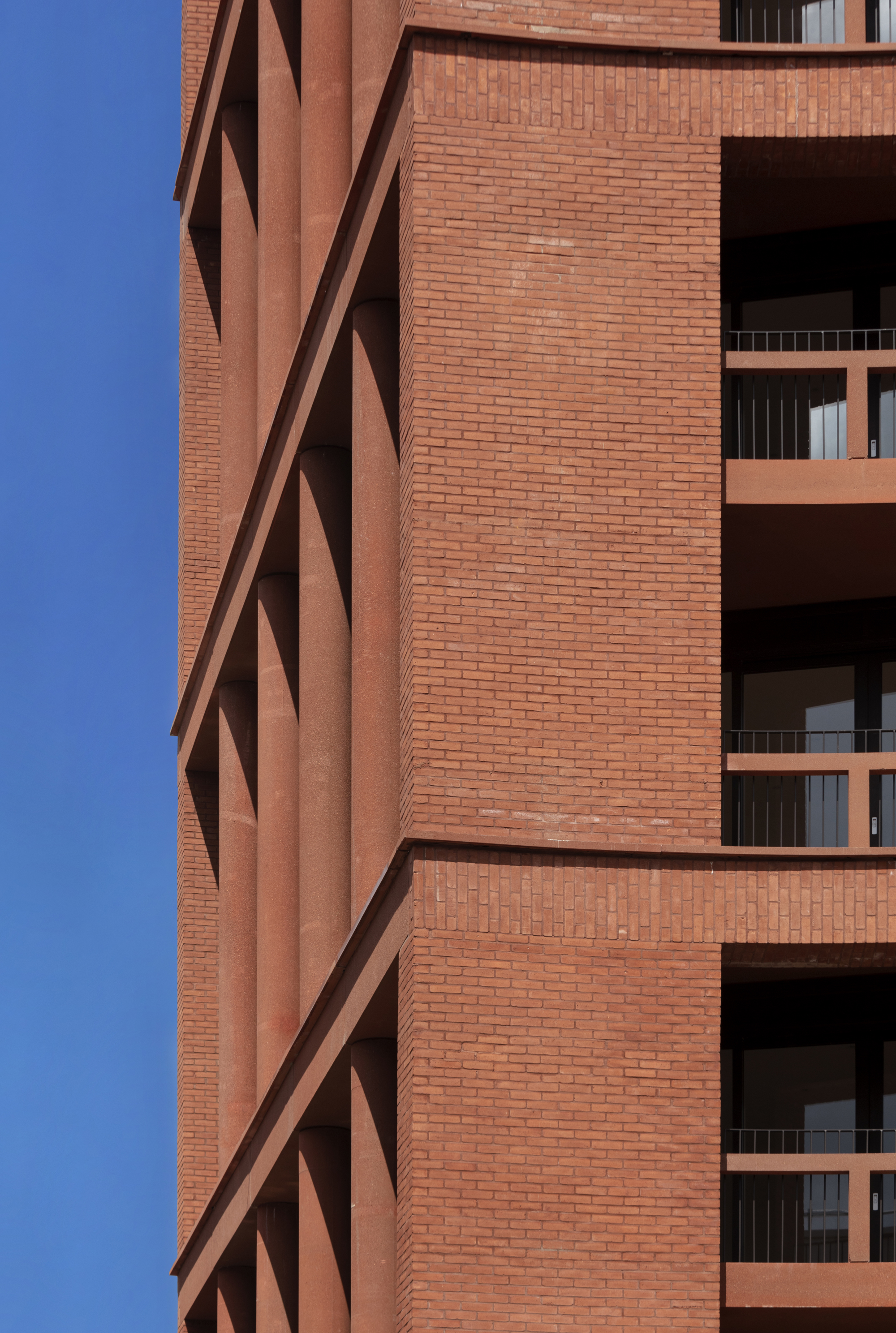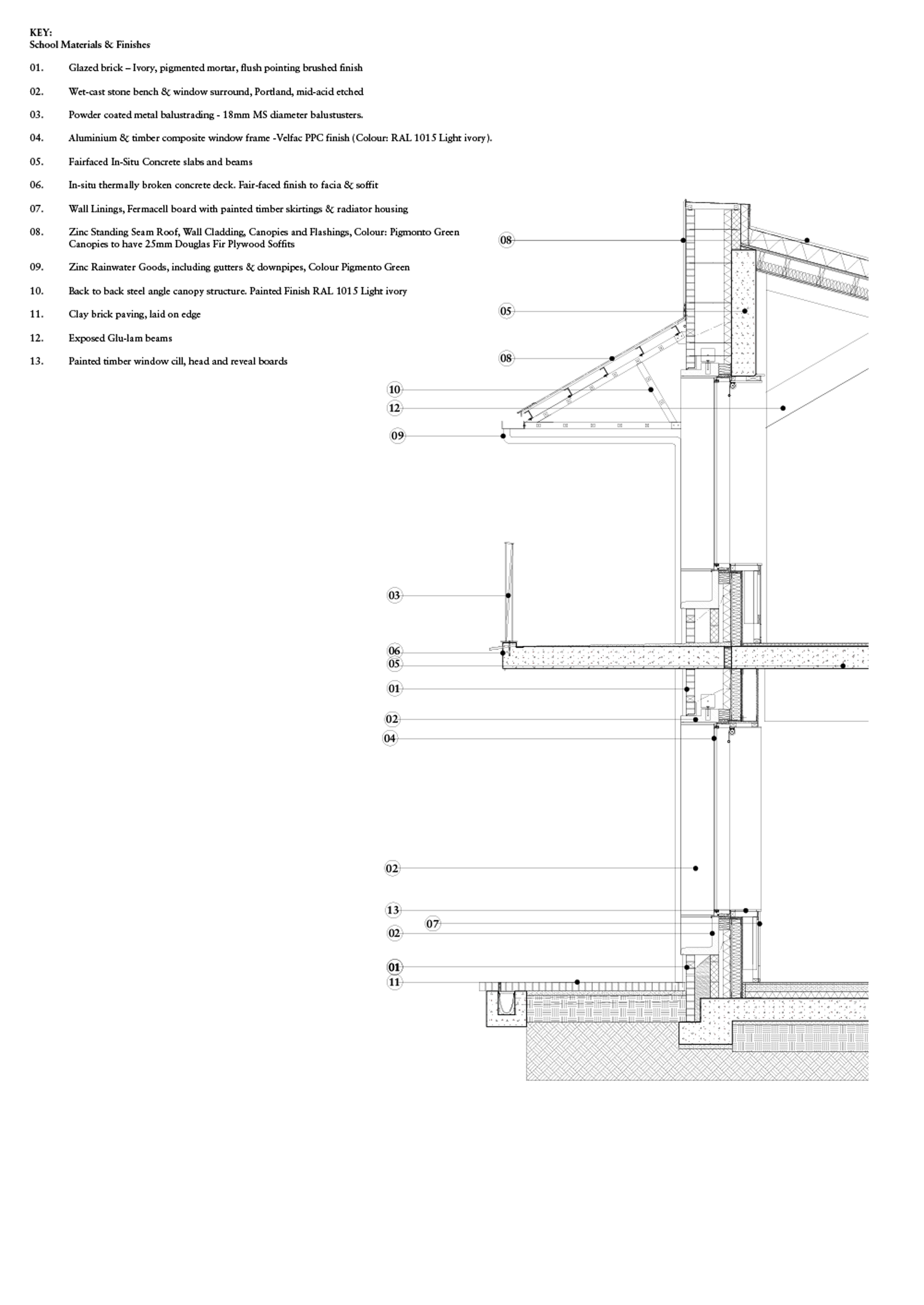333 Kingsland Road & Hackney New Primary School
Located on Kingsland Road, one of Hackney’s busy arterial roads on the edge of a conservation area, Hackney New Primary School combines a community-led school with affordable homes and shops at street level. It represents an exemplary approach to hybrid architecture combining different functions without losing the strengths of either the original educational or residential building typologies.
Designed around a cloistered courtyard, the school has an inner-city character. The adjacent residential tower reads as both a landmark for the development as a whole and as a central European type apartment block with its covered loggia at street level. The buildings’ concrete coloured with red sand and red granite aggregate together with its red brickwork unify the pair, bringing together their unrelated uses while emphasising the design of the two buildings as coherent elements of urban design.
Site
The 11-storey residential block protects the 3-storey school from noise and fumes along this major thoroughfare. Its compact plan frees up the site for the School and its generous open-air courtyard playground. This space is an important focal point for pupils and staff, engendering a collegiate spirit. It also brings natural light into the School.
The School
The cloistered gallery circulation orientates and organizes the school at all levels wrapping around the central courtyard. This is covered in canopies that provide shelter and shade while effectively controlling the scale of the School and neighbouring buildings for young children. Classrooms, music rooms, the main hall and administration offices all face the courtyard. They are faced with light ivory glazed bricks selected for their light reflecting properties. These also introduce colour to the outside
space.
Generous mezzanines, roof terraces, play spaces and gardens occur on all levels of the school promoting outdoor teaching, conversations, and exercise throughout the school day. In addition to other semi-covered spaces and deep classroom window recesses, these bring the school’s walls to life, allowing pupils to inhabit them as a liminal threshold between formal and informal worlds or indoor and outdoor spaces. The entrance to the school creates the break between the residential tower and the school, an inviting point of arrival with its wildlife-inspired gates designed in collaboration with the artist Paul Morrison.
Simon Henley, founder of Henley Halebrown says,
“The glazed brickwork walls that line the courtyard are sheltered by zinc and glazed canopies which recall those by Asplund at the Woodland Cemetery. Beneath, the thick walls are composed of a variety of differently sized window openings and doorways. Some windows are flush to the brickwork surface creating deep window seats inside the classroom. Others are deep-set to form precast concrete window seats adjacent to each classroom door. These liminal spaces, embed social patterns into the architecture and the fabric of the building.”
Apartment Building
The block has 68 apartments that share an orthogonal reinforced concrete central core. At the top of the tower is an open colonnade.
The plan of the building is molded – “pinched” and “twisted” – creating a solid convex curve as it turns a corner. This is critical in terms of how the architecture plays with its context, introducing movement and depth. The storeys are paired, with loggias carved out of the mass of brickwork with a double-height order extending around the perimeter of the building, further animating the elevations.
There is a strong interplay between the façade and the city making its wall a threshold between the building and the city. The apartment building thus gains a civic presence that transcends its immediate function. This also true of the School where its street-facing elevation is constructed with a long plinth used by the general public as a bench, so further adding to the architecture’s liminal quality and its role as a piece of social infrastructure within the community.
